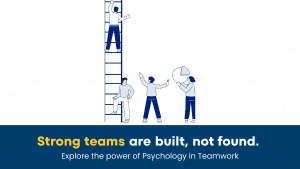Technostress management
Technostress can be caused by a multitude of factors in the workplace, including rapid technology advancements, a lack of necessary training, and excessive workload. Moreover, technostress can also be caused due to the feeling of being overwhelmed by technology.
Different kinds of technostressors are:
2. Techno-complexity: Advanced computerized networks in the workplace require employees to invest time and energy in mastering and comprehending new programmes as well as updating existing knowledge. It gives the employee the impression that they don’t understand modern technology well enough to utilize it effectively.
3. Techno-invasion: Ongoing access, regardless of distance or time, implying that personnel are always available to attend to work demands. It’s the impression of having technology intrude on one’s personal life.
4. Techno-Insecurity: Individuals begin to believe that they are not quite as smart as the latest and most advanced technological innovations, and thus feel that they will be replaced by AI.
It is extremely important to manage and efficiently deal with technostress.
Following are some strategies that help in managing technostress:
In-house digital training in the workplace – Individuals who are trained about using the latest technology efficiently are less likely to experience technostress and anxiety and are more comfortable and confident about their abilities.
Rest and unplug when required– Find some time for yourself. Do something that comforts and soothes you, such as Reading, going for a run, meditating, playing music, or cooking. Before going to bed, stay away from devices because the blue light devices create can disturb your sleeping patterns.
Define and maintain boundaries– Set a screen time schedule for yourself and try following it. Avoid sending emails or work messages at any and all hours of the day. Withdraw from work, specifically during the nights and weekends. Spend more time with the people you care about.
Eliminate distractions – Avoiding technological distractions and regaining focus might be as simple as limiting your focus on one particular task. Distractions of any kind makes the individual less efficient and might cause psychological fatigue.
How to level up your grit?
If we have different levels of grit, then can one increase it with practice? How can grit be strengthened ? Researchers suggest to follow upon these steps to practice grit –
- Interest – Search for your interests that fascinates you. Goals are not only to be achieved but also to be enjoyed.
- Mentor – Role model, teacher/coach or mentor will help you to improve and learn something new. Be open to taking on new challenges and feedback.
- Practice – Gritty people are hardworking, they practice consistently. Upskilling is important and practicing skills is most important.
- Higher Purpose – Having a goal that will benefit others, gives you a sense of accomplishment and helps to enjoy the journey. Doing good for others is motivating and fulfilling in all terms.
- Hope – Toughest part is being hopeful. But believe in yourself. You will achieve it one day for sure. The most difficult tasks seemed to be impossible at first but what made them happen is hope.
- Visualize – Rarely given advice is to visualize how you will feel when you would achieve your goal, although positive psychology does suggest such activity.
| Close your eyes and imagine what the scene would look like, what feelings and emotions you feel and what would you do to celebrate. Wasn’t that scene fabulous! Now let’s make it happen. |
Interest, practice, hope and purpose all four are pillars to form a strong grit for your long-term goal. The long days and evenings of toil, the setbacks and disappointments, the struggle, the sacrifice—all this is worth it because, ultimately, the efforts of gritty people pay dividends to other people.


